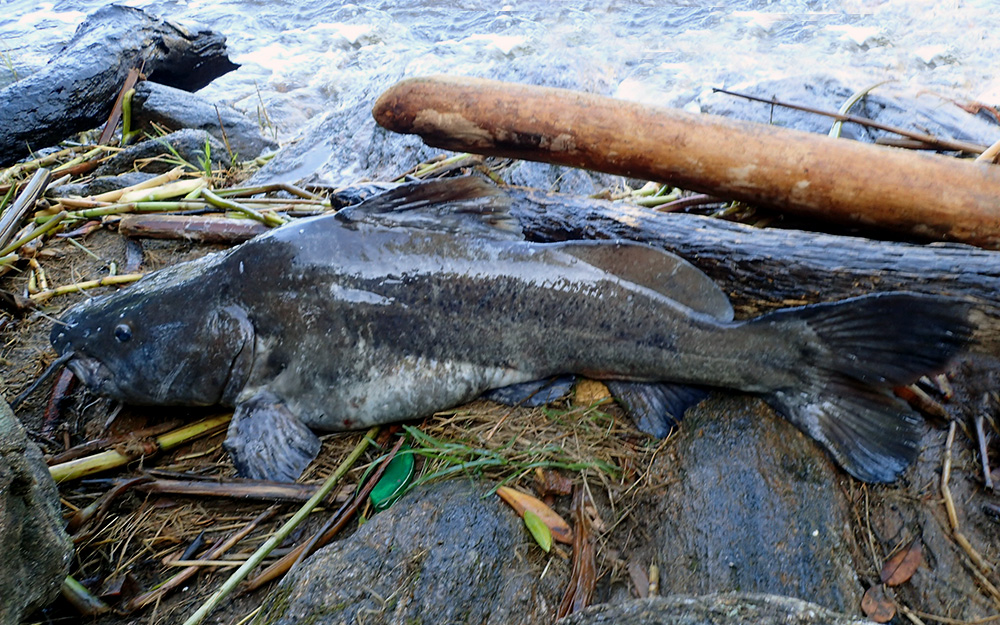Semutundu
(Bagrus docmak)

Classification
General data
Distribution
Africa: widely distributed throughout Chad, Niger, Volta, Senegal, Mono, Oueme, Cross and Sanaga Rivers, as well as the Rift Valley Lakes Edward, George, Albert, Victoria and Tanganyika, but not Lake Kivu. Widely distributed in Nile system (Ref. 28714, 31439, 58460). In the Lukuga River (Lake Tanganyika outflow), known up to the Kisimba-Kilia rapids.
Short description
Dorsal spines (total): 1; Dorsal soft rays (total): 8-11; Anal spines: 0; Anal soft rays: 11 - 14; Vertebrae: 46 - 49.
Diagnosis: head depressed, broad, about 1.3-1.6 times as long as wide, squarish when viewed from above, without rough texture. Head width measured at base of preopercle 58.9-71.8% head length; 12-16 gill rakers on first gill arch.
Body slightly elongated, 5-6 times longer than deep.
Four pairs of barbels.
9-10 branched dorsal fin rays, not or only slightly filamentous. Long adipose dorsal fin present, narrowly separated from the dorsal fin.
Biology
Inhabit lakes, swamps and rivers. Widespread in both shallow and deep water. Probably associated with rocky bottoms/coarse substrates. Mostly active during the night and the twilight hours.
Moderately important as a food species in Lake Victoria, but becoming rare with the appearance of Nile perch. Catches decreased strongly in Lake Victoria after the Lates upsurge. Predation by Lates and competition with Lates (for haplochromines) may have played a role in the decline. A notably recovery in waters between 3m and 6m depth in Lake Victoria has been reported.
Second most important food species in Lake Edward, Congo.










